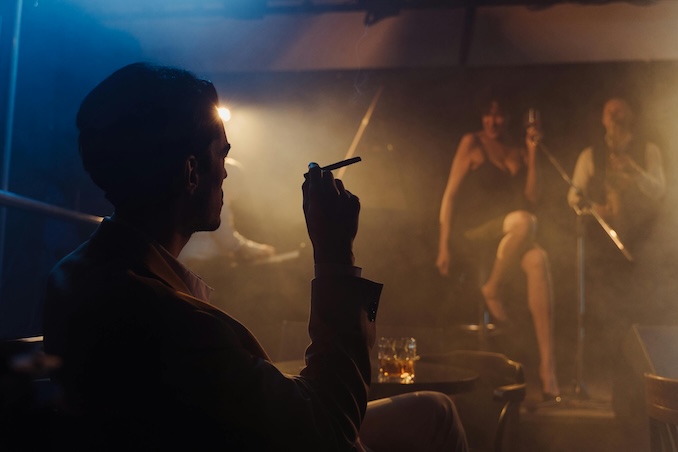Nightclubs have always been powered by music—but the way that music is delivered has evolved dramatically over the decades. From smoky dance halls filled with live jazz bands to today’s laser-lit clubs run by digital DJs, the technology behind the sound has continually shaped what nightlife looks and feels like. Whether you are looking at the best nightclubs in Calgary or a quiet spot in LA, the transformation was not just about convenience—it was about how culture, technology, and creativity converged on the dancefloor.

Let’s take a journey through the history of how club music is played, from analog to digital, and beyond.
1950s–1960s: The Era of Live Bands and Vinyl Beginnings
In the early days of nightlife, especially in the 1950s and early 1960s, music in clubs was largely live. Dance halls and lounges booked jazz combos, swing bands, and soul acts, with performers providing the energy and emotion in real time. The bandstand was the heart of the venue, and musical improvisation ruled the night.
But even during this era, technology was starting to creep in. Vinyl records—especially the 45 rpm single—began to appear in lounges and bars, played on basic turntables for background music when the band was on break.
Key Tools: Live instruments, microphones, PA systems, record players
1970s: The Rise of the DJ and the Disco Turntable
The 1970s marked a revolution in nightlife: the birth of the nightclub DJ. Clubs like The Loft and Studio 54 introduced a new format—records played continuously by a selector who controlled the mood of the room. The music of choice was disco—long, rhythmic tracks perfect for dancing.
Enter the Technics SL-1200 turntable, which would become the industry standard. DJs developed the art of beatmatching and cueing—lining up two records to blend them seamlessly. The dancefloor was no longer bound by band breaks. The party could go all night.
Key Tools: Dual turntables, analog mixers, vinyl records, boombox-style speakers
Iconic DJ Technique: Beatmatching and crossfading
1980s: Cassettes, Synths, and the Electronic Invasion
As the ‘80s dawned, electronic instruments started to reshape not just music, but how it was played. Synthesisers, drum machines, and sequencers gave rise to genres like synthpop, freestyle, and early house. Some clubs still used live performers, but many relied on DJs spinning 12-inch singles with extended dance edits.
Cassette tapes were also used in smaller or DIY clubs—cheap, portable, and sometimes even played by early mobile DJs who couldn’t afford turntables.
Key Tools: Analog mixers, vinyl, cassette decks, MIDI-compatible keyboards, Roland 808
Notable Shift: Clubs started installing more powerful sound systems optimised for low-end bass
1990s: CDJs, Samplers, and the Digital Crossover Begins
In the ‘90s, compact discs (CDs) began to challenge vinyl’s dominance. Pioneer released the CDJ-500 in 1994, allowing DJs to mix digital tracks similarly to vinyl—with pitch control and cue points. While vinyl remained king in underground scenes, mainstream clubs embraced CDJs for their durability, portability, and ease of use.
Meanwhile, DJs began incorporating samplers and FX processors, adding their own twist to tracks with loops, delays, and vocal chops.
Key Tools: CDJs, samplers (like the Akai MPC), vinyl, mixers with effects units
Genre Impact: CDJs helped commercialise DJ culture, especially in house and trance scenes
2000s: The Laptop DJ and MP3 Explosion
The 2000s brought about the digital DJ revolution. With laptops, DJs no longer needed to carry crates of records or CDs. Software like Traktor, Serato, and Virtual DJ allowed for digital crates, sync functions, and waveform visuals, making beatmatching more accessible.
Control vinyl and DVS systems (Digital Vinyl Systems) like Serato Scratch Live let DJs use traditional turntables to manipulate digital files—bridging the analog and digital worlds.
Key Tools: Laptops, DJ software, USB controllers, DVS systems
Major Shift: MP3s replaced physical media; music libraries became nearly infinite
Debate: “Real DJing” vs. digital convenience became a hot topic
2010s: USB Sticks, Controllers, and Full Integration
By the 2010s, DJ booths were fully digital. The Pioneer CDJ-2000NXS allowed DJs to plug in USB drives and access large digital libraries without a laptop. DJ software and MIDI controllers evolved into sleek, all-in-one units that gave even beginners tools once reserved for pros.
Boiler Room-style streaming and controllerism (live remixing via pads and knobs) became popular. Genres blurred, sets became more complex, and the DJ booth became a performance space.
Key Tools: USB-enabled CDJs, DJ controllers, Rekordbox, Traktor, Ableton Live
Trend: Rise of the “producer-DJ”—artists making and performing their own tracks live
2020s: Cloud Integration, AI Tools, and Hybrid Performances
Today, DJing continues to evolve rapidly. Streaming integration via services like Beatport LINK allows DJs to access millions of tracks on the fly. Some software uses AI-assisted beatmatching and key detection. Meanwhile, many DJs incorporate live looping, vocals, and even modular synths into hybrid performances that blur the line between DJ set and live show.
Vinyl has seen a niche resurgence, but most club booths are still digital-first. And thanks to platforms like TikTok and YouTube, the barrier to entry is lower than ever—yet standout DJs still rise by innovating, curating, and connecting with the crowd in real time.
Key Tools: Streaming-integrated CDJs, AI-enhanced software, hybrid DJ/live rigs
Next Frontier: VR clubs, AI-generated music, and immersive sound installations
Music Delivery as a Reflection of Culture
The way music is played in nightclubs has always been more than a technical choice—it reflects the values and aesthetics of its time. From vinyl purists spinning disco classics to digital DJs mixing Afrobeats in real-time from a USB stick, every format brings its own philosophy, challenges, and style.
The tools may change, but one thing remains constant: the goal of moving people—physically, emotionally, and collectively. Because no matter the medium, the music always finds a way to make us dance.
